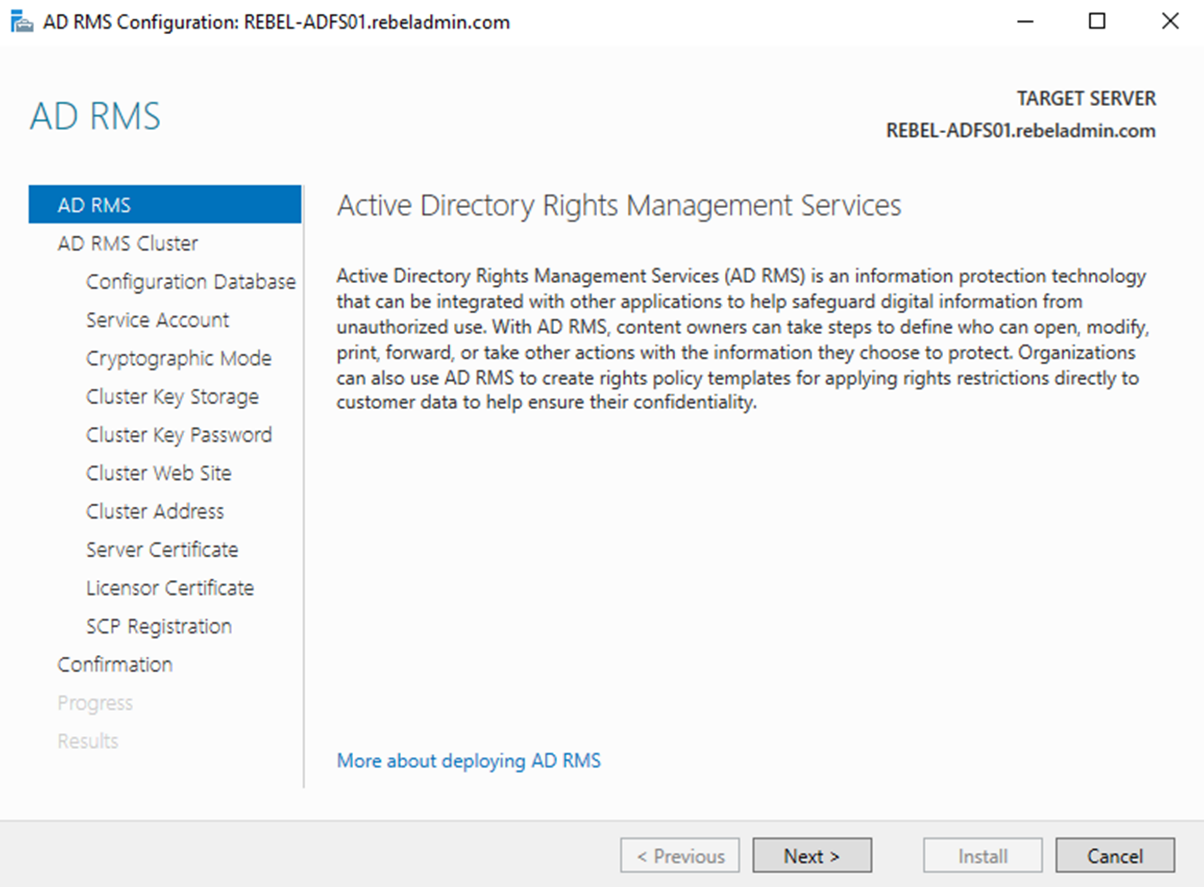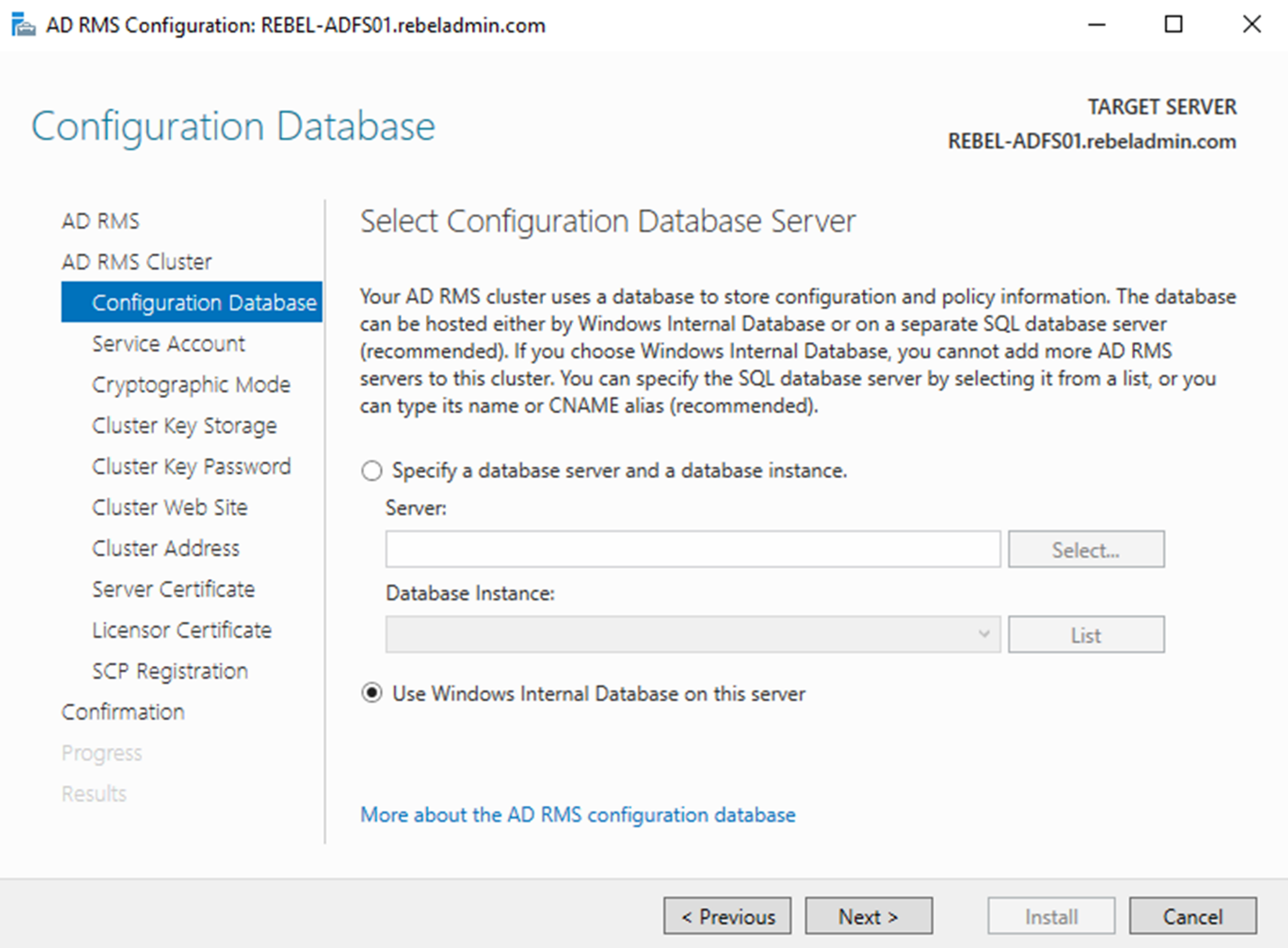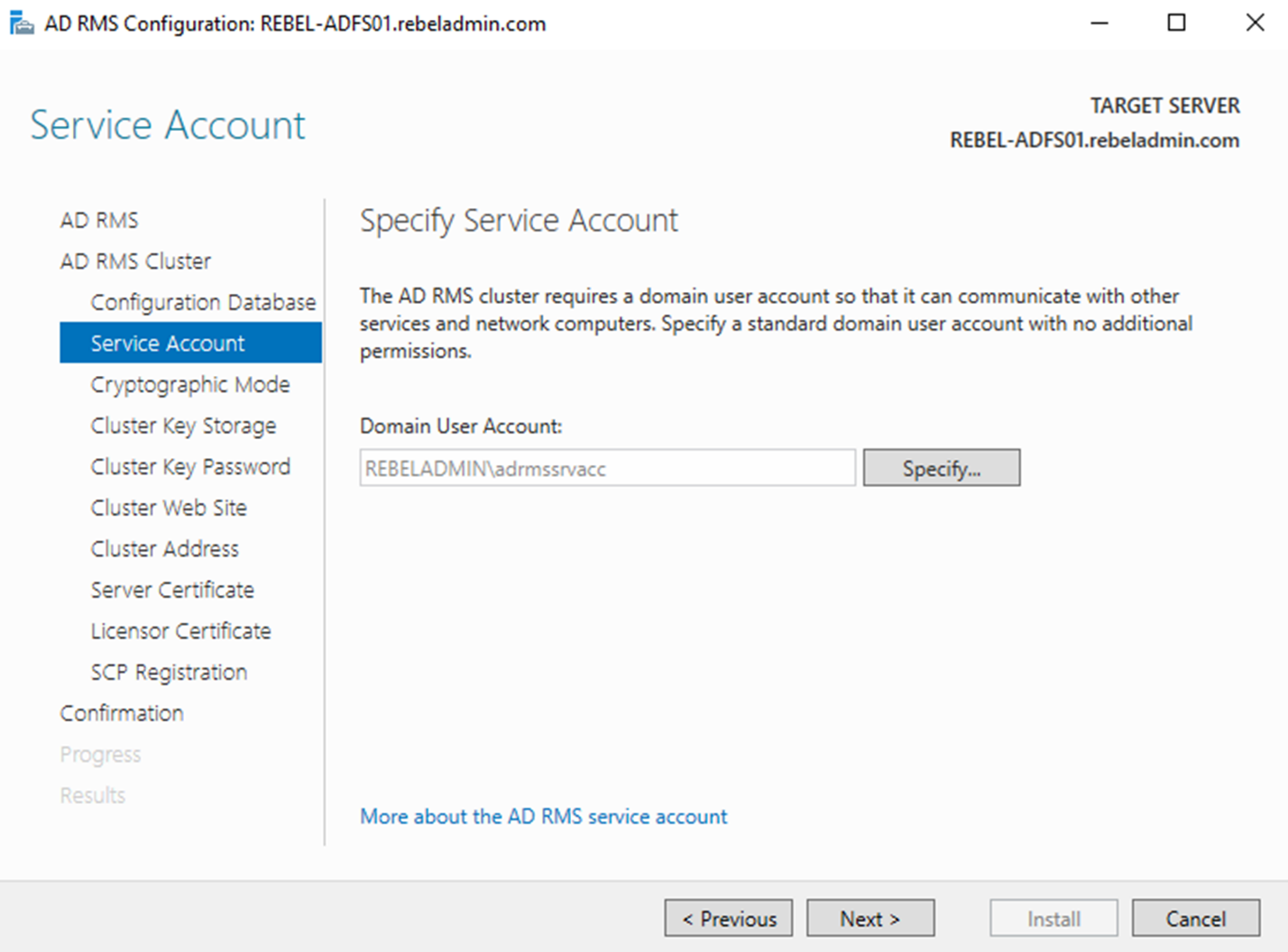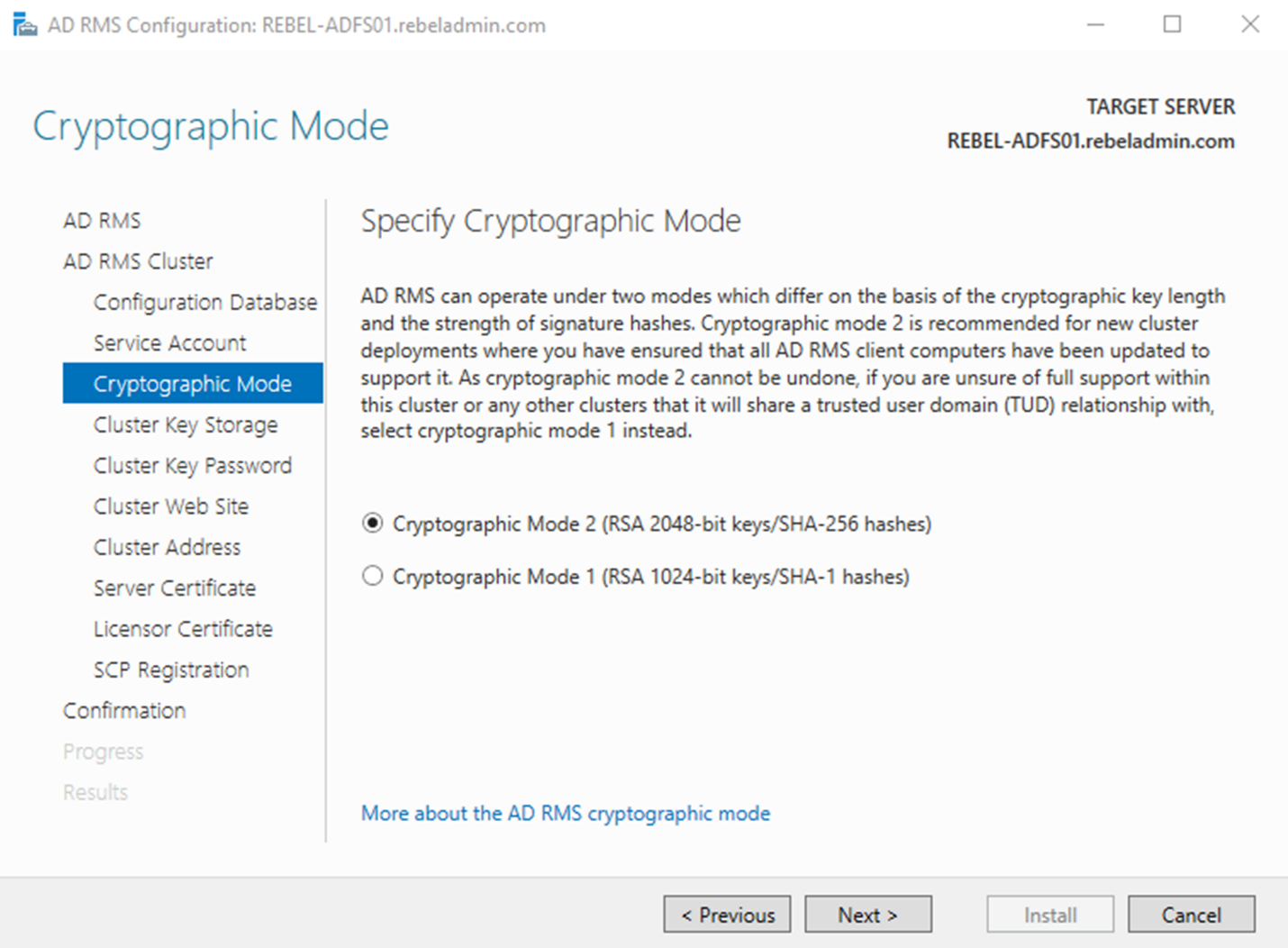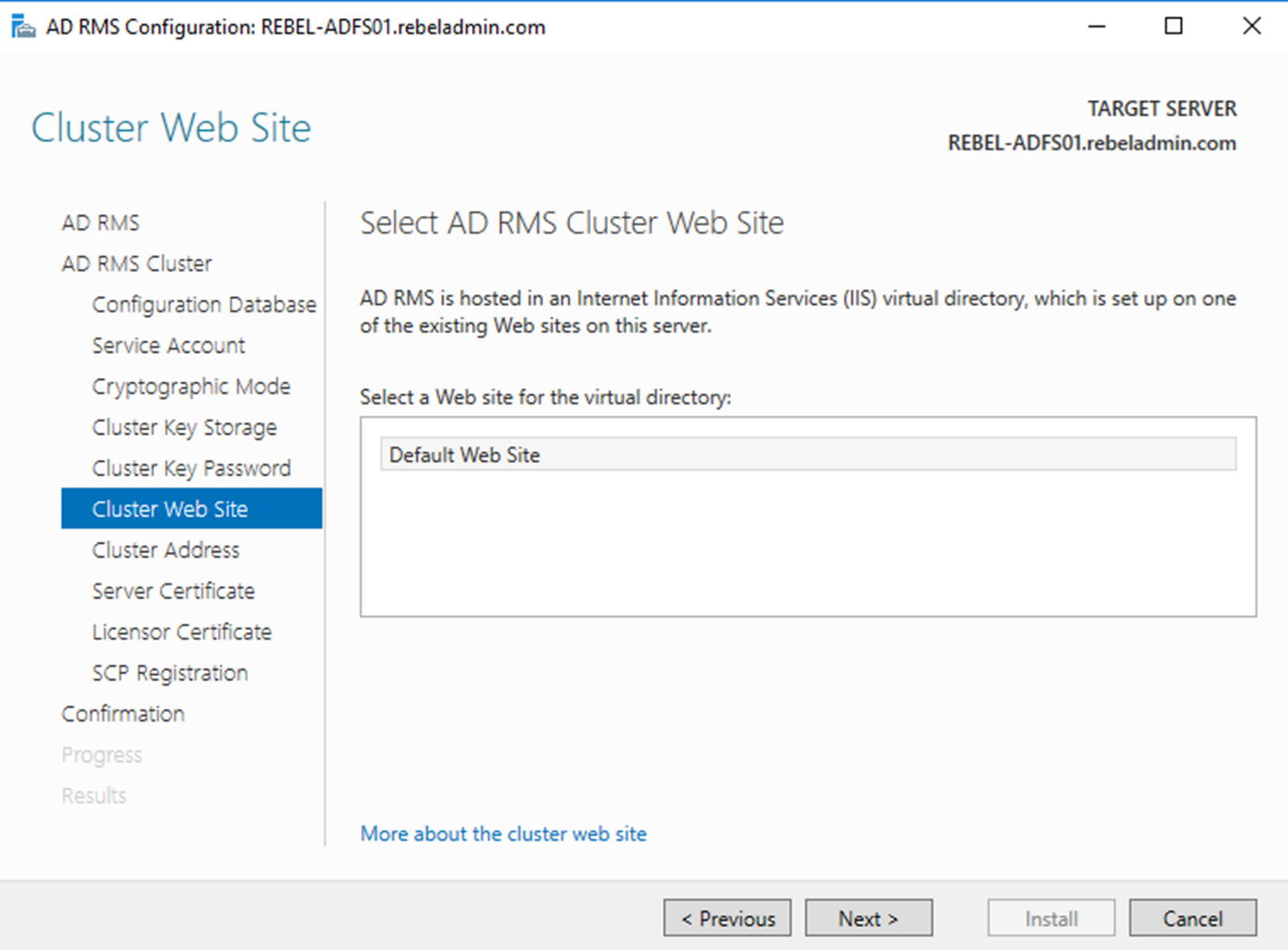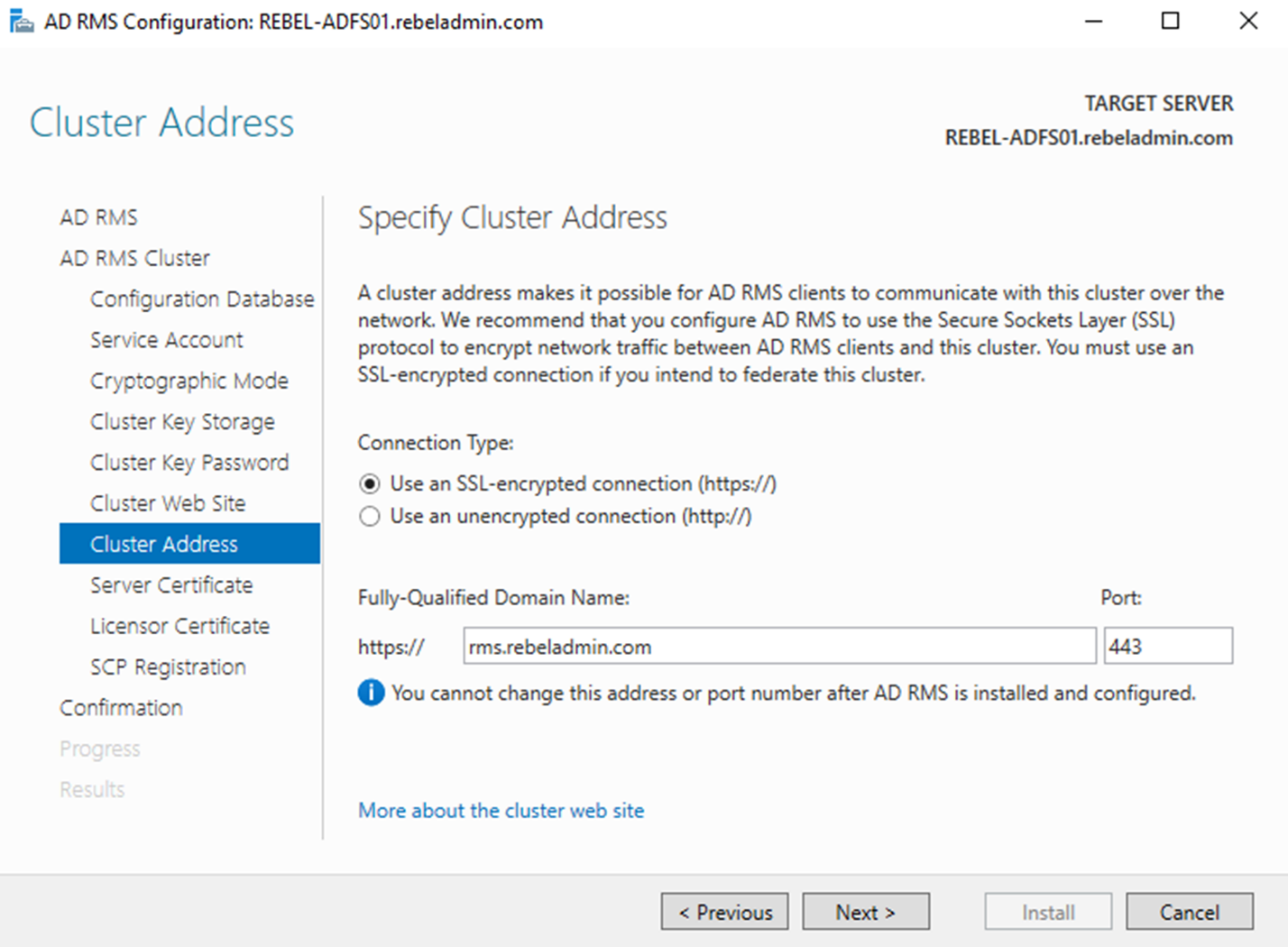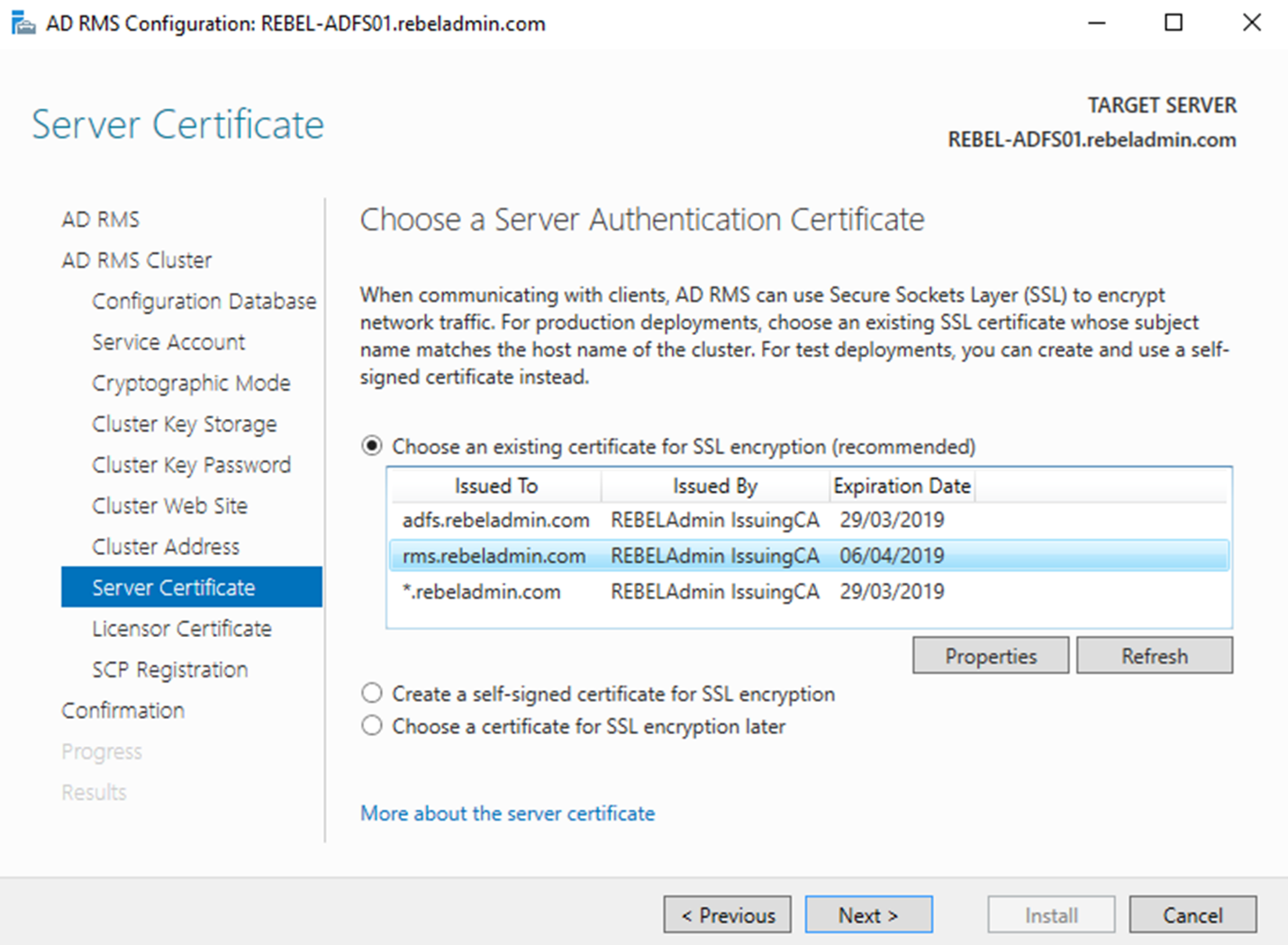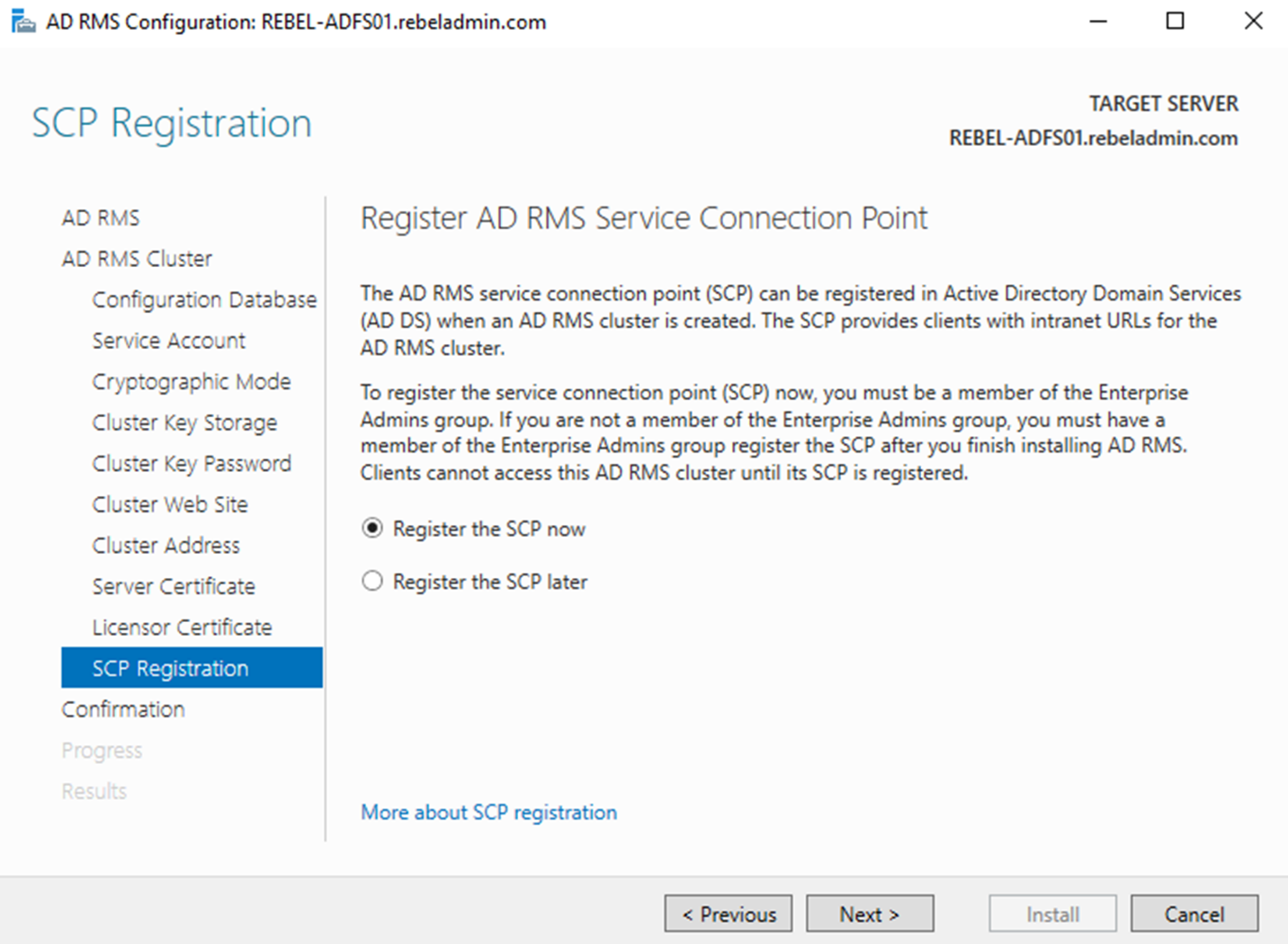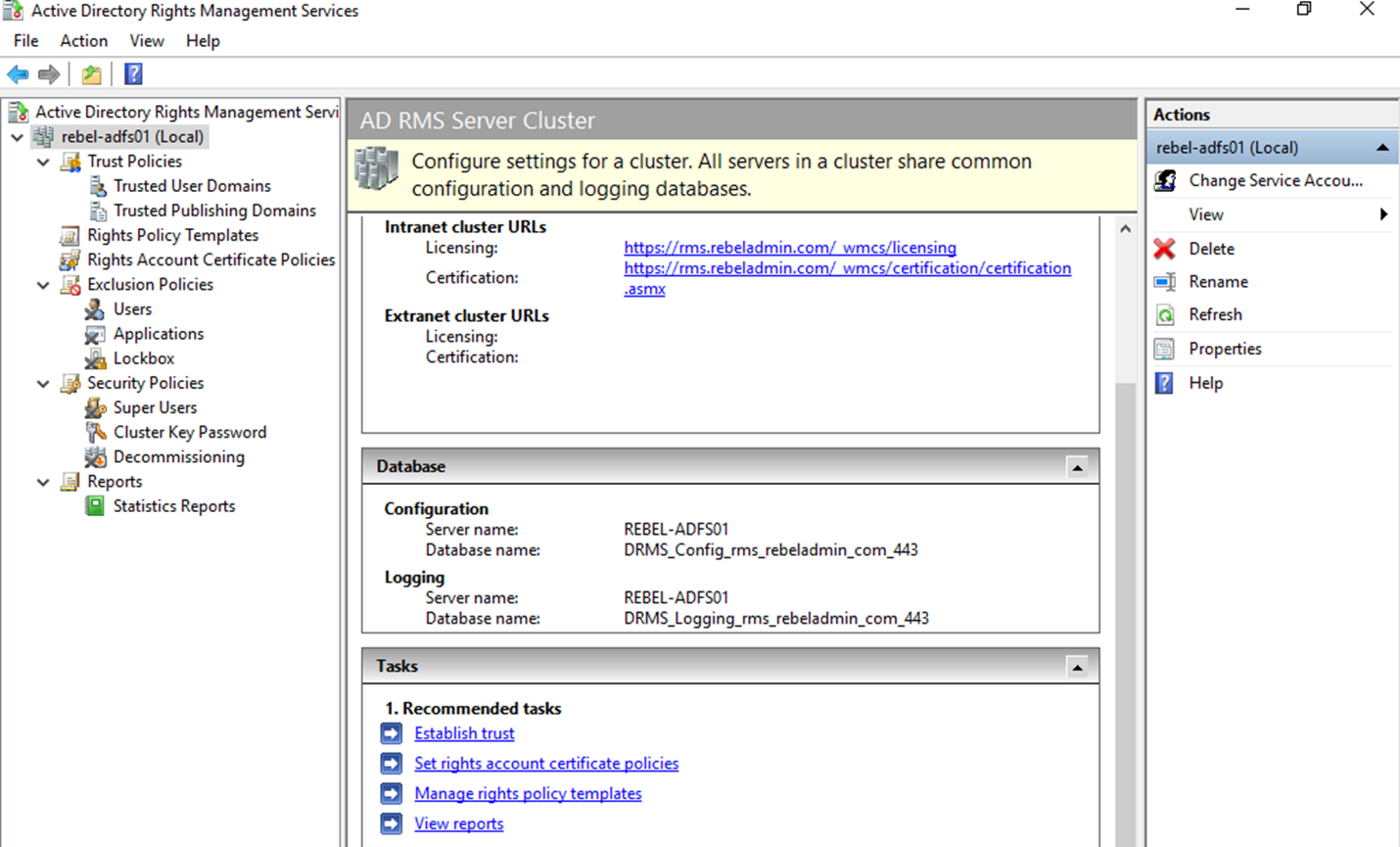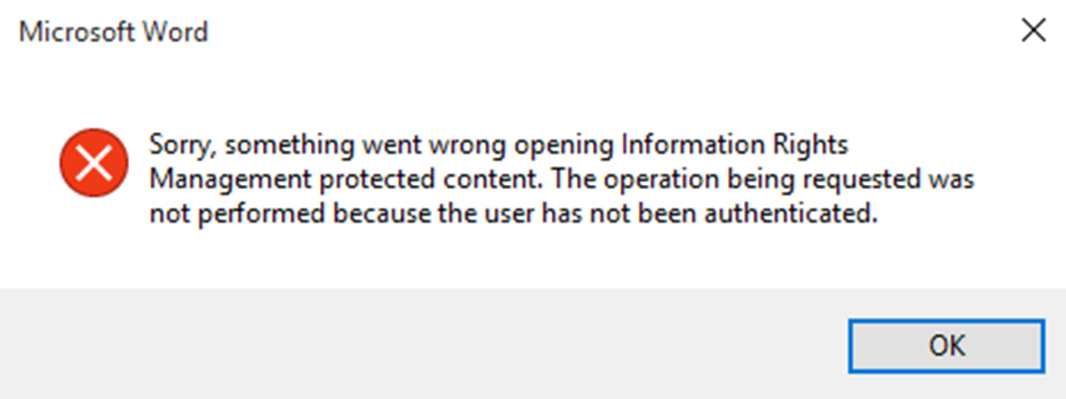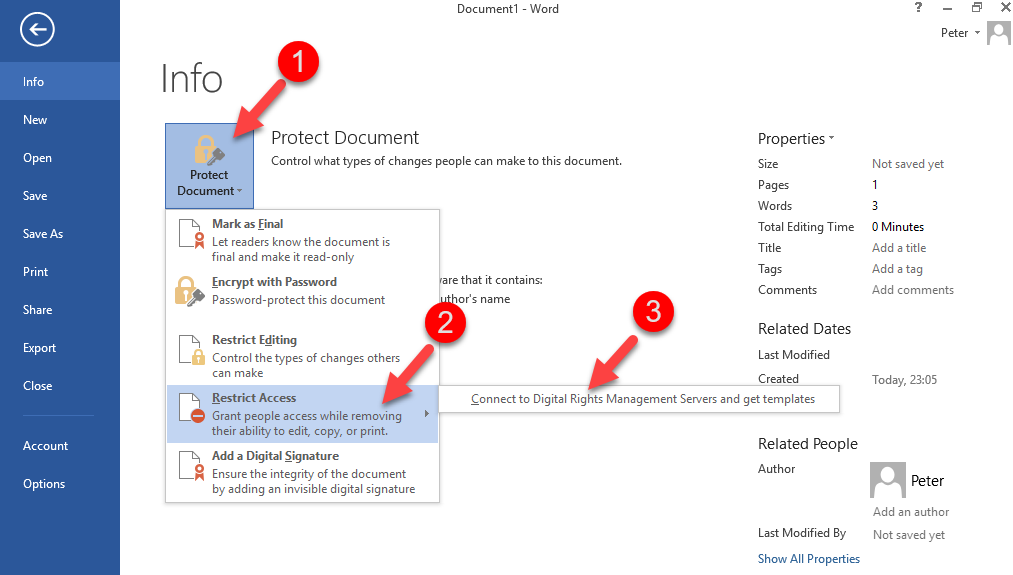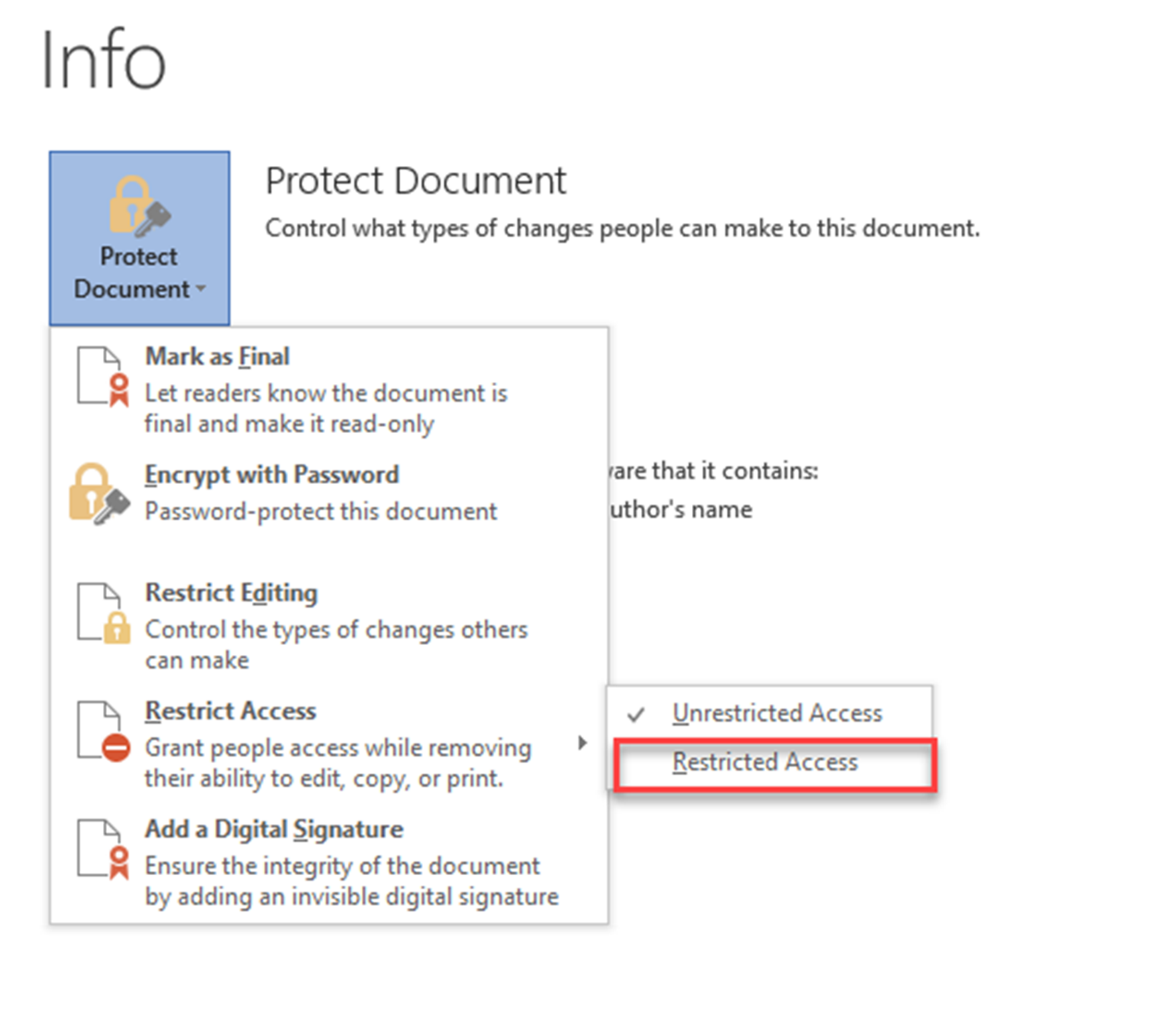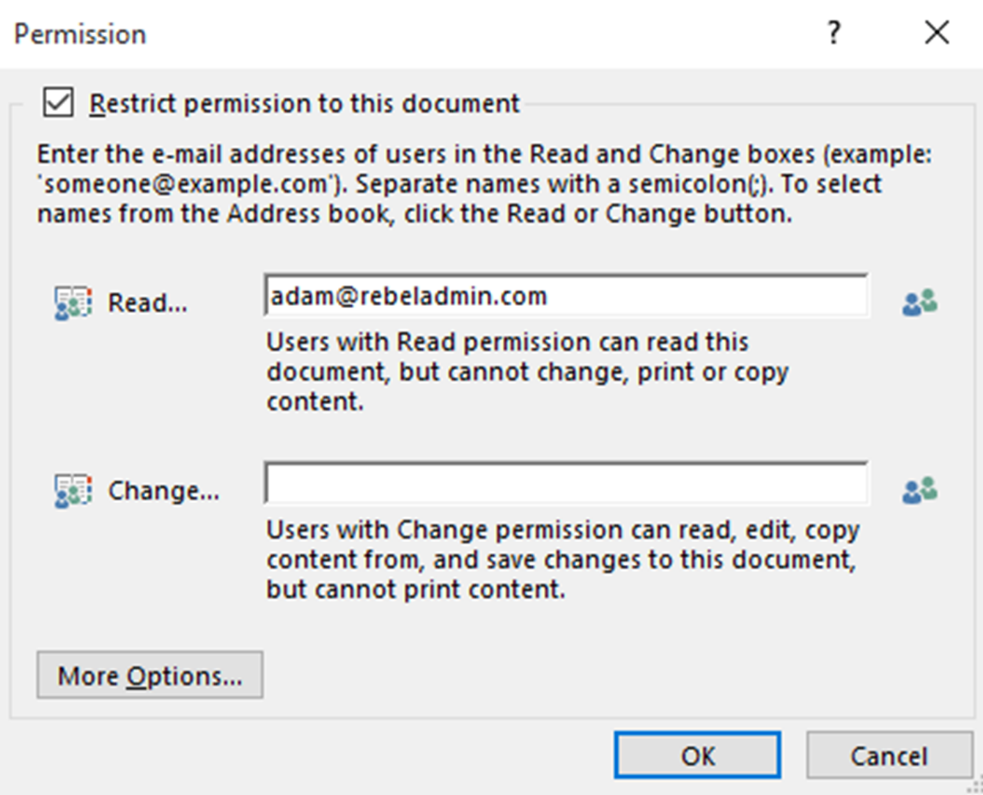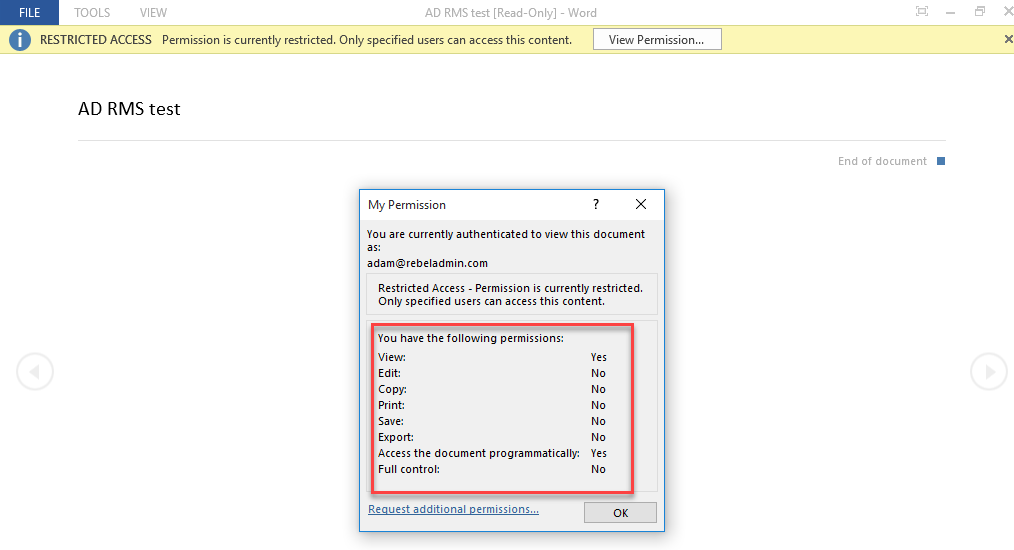So far in this series we learn what is RMS and how it works. You can access those using,
Part 01 – What is AD RMS ?
Part 02 – AD RMS Components
Part 03 – How AD RMS Works ?
This is the last part of the series and in here I am going to demonstrate how to install and configure AD RMS.
Setup AD RMS Root Cluster
AD RMS only can install in Domain Member Server. I have a demo server setup and its already member server of the domain. First AD RMS server add to the forest creates the AD RMS cluster.
Install AD RMS Role
1) Log in to the server as Enterprise Administrator.
2) Install the AD RMS role and related management tools using,
Install-WindowsFeature ADRMS -IncludeManagementTools
Configure AD RMS Role
1) Launch Server Manager > Notifications > Under “Configuration required for Active Directory Rights Management Services” > Perform Additional Configuration. This will open the AD RMS Configuration Wizard. Click Next to start the configuration.
2) In next screen, it gives option to create new AD RMS root cluster or join it to existing AD RMS cluster. Since it is new cluster, select option Create a new AD RMS root cluster and click Next.
3) Next Screen is to define the AD RMS database configuration. If it’s going to use MS SQL server need to specify the Database server and the instance. Or else it can use Windows Internal Database. Please note if WID used, it cannot have any more AD RMS servers and cannot have AD RMS mobile extension either. Since its demo, I am going to use WID. Once selection made, click Next to move to next step.
4) In Next window, we need to define service account. It is used to communicate with other services and computers. This doesn’t need to have Domain or Enterprise Admin rights. Click on Specify and provide the user name and password for the account. Then click Next to Proceed to next window.
5) In next windows, we need to select the Cryptographic mode. This defines the strength of the hashes. This is support two mode which is SHA-1 and SHA-256. It is highly recommended to use Mode 2 which is SHA-256 for stronger hashing. However, this need to be match with the other RMS cluster it deals with. In our setup, I am going to use default SHA-256. Once Selection is made click next to proceed.
6) AD RMS uses cluster key to sign the certificate and licenses it issues. This is also required when AD RMS restore or when new AD RMS server add to the same cluster. It can be saved in two places. Default method is to use AD RMS centrally managed key storage. So, it doesn’t need any additional configurations. It also supports to use cryptographic service provider (CSP) as storage. But this required manual distribution of key when add another AD RMS server to the cluster. In this we will use option “Use AD RMS centrally managed key storage”. Once selection is made click Next to proceed.
7) AD RMS also uses Password to encrypt the cluster key described in above. This is required to provide when add another AD RMS server to cluster or when restore AD RMS from backup. This key is cannot reset. There for recommended to keep it recorded in secure place. Once define the AD RMS Cluster Key Password, click Next to proceed.
8) In next window, we need to define the IIS virtual directory for the AD RMS web site. Unless there is specific requirement always use the default and click Next.
9) In next step, we need to define a AD RMS cluster URL. This will use by AD RMS clients to communicate with AD RMS cluster. It is highly recommended to use SSL for this even its allow to use it with HTTP only method. The related DNS records and Firewall rules need to be adjusted in order to provide connection between AD RMS clients and this URL (Internally or Externally). Once configuration values provided, click Next to proceed. One thing need to noted is, once this URL is specified, it cannot be change. In this demo, the RMS URL is https://rms.rebeladmin.com.
10) In next step, we need to define Server Authentication Certificate. This certificate will use to encrypt the network traffic between RMS clients and AD RMS cluster. For testing it can use self-signed certificate but not recommended for production. If its uses internal CA, client computers should be aware of the root certificate. In wizard, it automatically takes the list of SSL certificates installed in the Computer and we can select the certificate from there. It also allowed to configure this setting in later time. Once settings are defined, click Next to proceed.
11) In next window, it asks to provide Name for the Server License Certificate (SLC). This certificate is to define the identity of the AD RMS cluster and it used in the Data protection process between clients to encrypt/decrypt symmetric keys. Once defined a meaningful name, click Next to proceed.
12) Last step of the configuration is to register AD RMS connection service point (SCP) with the AD DS. If needed this can configure later too. This need enterprise administrator privileges to register it with AD DS. In this demo, I already logged as enterprise administrator so I am using “Register the SCP now”. Once option selected, click Next.
13) After the confirmation, installation will begin and wait for the result. If it’s all successful, log off and log back in the AD RMS server.
14) Once log back in, Go to Server Manager > Tools > Active Directory Rights Management Service to access the AD RMS cluster.
Test Protecting Data using AD RMS Cluster
Next step of the demo is to test the AD RMS cluster by protecting data. For that I am using two user accounts.
|
User |
Email Address |
Role |
|
Peter |
Author |
|
|
Adam |
Recipient |
Email account filed is must and if user doesn’t have email address defined, it will not be allowed to protect the document.
The end user computers must have added https://rms.rebeladmin.com to the Internet Explorer, Local Intranet’s trusted site lists. This can be done via GPO. If it’s not added, when go to protect the document, users will get following error,
In this demo as user Peter going to create protected document using Word 2013. The recipient will only be user Adam and he will only have read permission.
To Protect the Document
1) Log in to the Windows 10 (Domain member) computer as user Peter
2) Open word 2013 and type some text
3) Then Go to File > Protect Document > Restrict Access > Connect to Digital Rights Management Servers and get templates
4) Once its successfully retrieves the templates, go back to same option and select Restricted Access
5) Then it will open up new window. On there for the read permissions, type adam@rebeladmin.com to provide read only permission to user adam. Then click OK.
6) After that save the document. In demo, I used a network share which user adam also have access.
7) Now I log in to another window 10 computers as user adam.
8) Then brows to path where document was saved and open it using word 2013.
9) On the opening process, it asks to authenticate to the RMS to retrieve the licenses. After that it open the document. In top of the document it says document got limited access. When click on the “View Permission” it list down the allowed permissions and it matches what we set in the author side.
10) Further in to testing I have log in to system as another user (Liam) and when I access the file I gets,
This ends the configuration and testing of the AD RMS cluster. In this demo, I explained how we can set up AD RMS cluster with minimum resource and configuration. I only used the default configuration of AD RMS cluster and no custom policies applied. By understand core functions allows you to customize it to meet your organization requirements.
This marks the end of this blog post. If you have any questions feel free to contact me on rebeladm@live.com also follow me on twitter @rebeladm to get updates about new blog posts.


